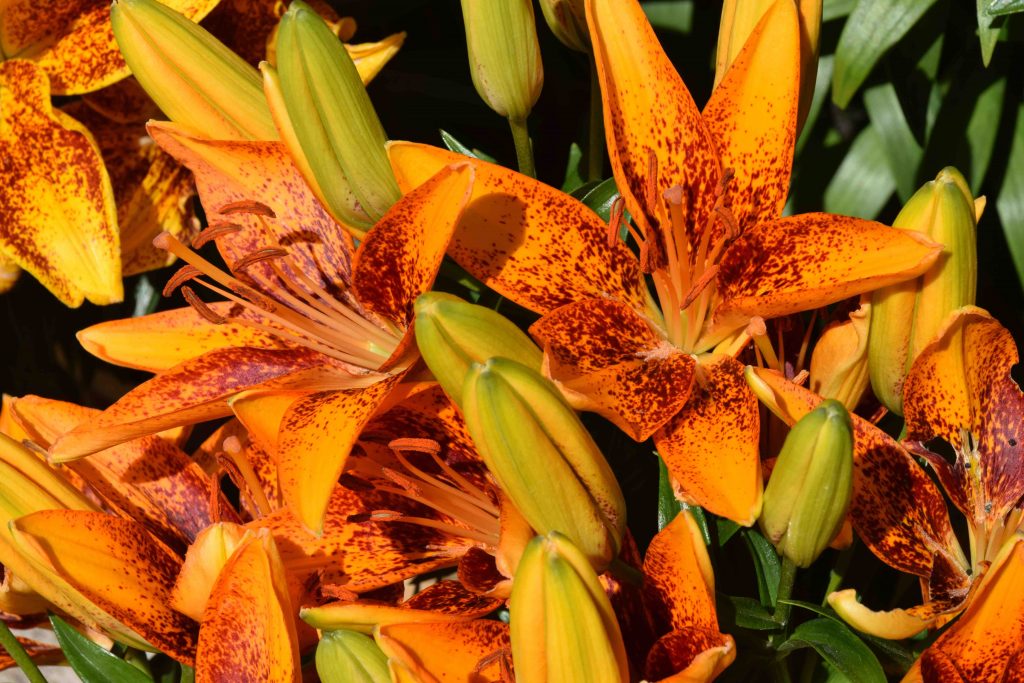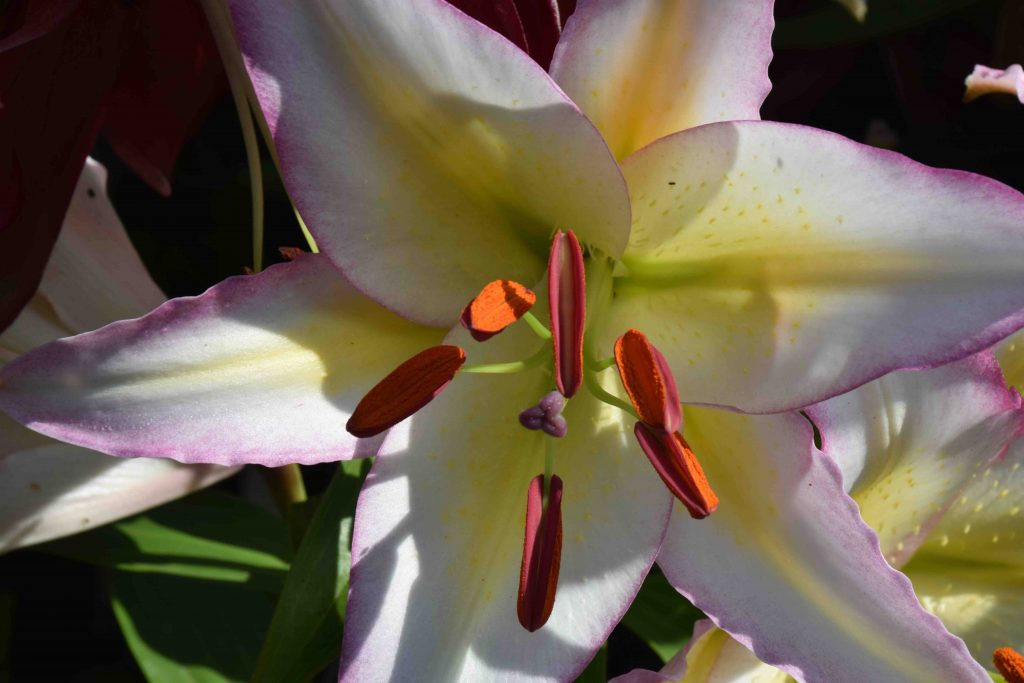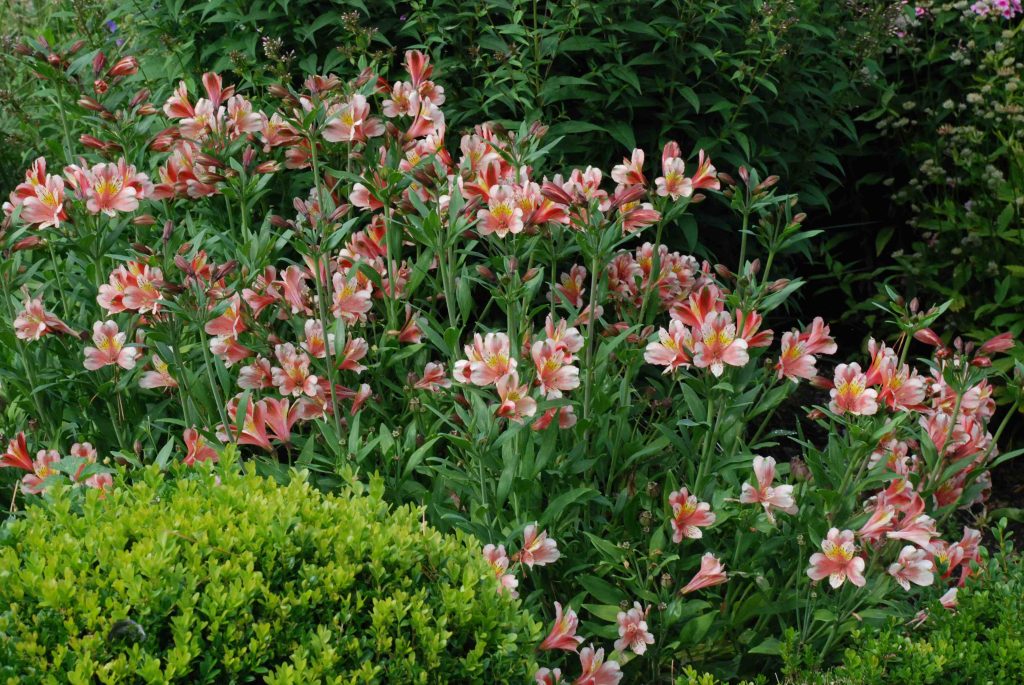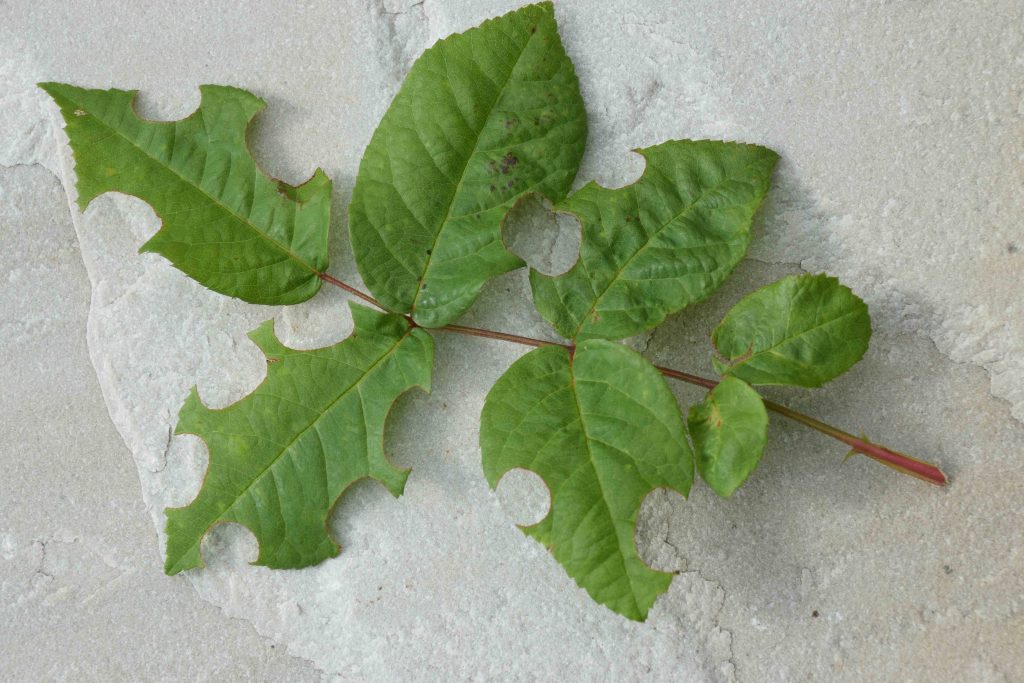
There was a time, before many of you were born, when lilies were exotic and considered difficult to grow. Like many garden centres, Knights, in my day, would offer loose lily bulbs in boxes and the choice was limited. There was the heavily scented Lilium regale, with white, maroon-flushed flowers and a range of trumpet hybrids such as ‘Pink Perfection’. Then plant breeders did the impossible and managed to hybridise different sections of the genus and an avalanche of new lilies has been produced. Most of these were bred as cut flowers and have upward-facing flowers – because they fit most easily into plastic sleeves!
This means that lilies are now inexpensive and they are easy to grow. But there are a few things to remember. First is the red peril – lily beetle. These bright red beetles will chomp away at the leaves and flowers and MUST be killed or they will lay eggs and these hatch to nasty grubs that eat the plants and protect themselves with their own poo.
And there is a slight issue with soil pH – the acidity of your soil. The good news is that some of the new lilies, including the OT lilies. also called ‘Tree lilies’ or skyscraper lilies, are not fussy about soil acidity. But the Asiatic lilies – usually unscented and early-blooming (above) prefer alkaline soil and the Orientals (below), with huge, fragrant flowers (such as StarGazer), need acid soil or they slowly deteriorate.
Lilies like a sunny spot or part shaded and need good drainage. They like moisture in summer but they must not be soggy in winter. They are hardy and must not be dug up for winter. They are good in pots. If you want to cut some from the garden for the house, make sure you leave at least half the length of the stem and they will be just as good next year.

And then there are Peruvian lilies or alstroemerias. These are not related but are also grown by the million for cut flowers and again have been transformed over the past decades. Look in old books and there will be mention of Alstroemeria aurea which is hardy and spectacular when in bloom but does not bloom for long and, after flowering, the plant dies down, leaving a big hole in the border. But plant breeders have worked hard to give us alstroemerias that are hardy, flower all summer and have blooms in an amazing range of colours.

There are lots to choose from and the dwarfs are the most popular. But I like the taller kinds more because they are lovely garden plants and are so useful for cutting (when taking them from the garden pull the stems up rather than cut) and they flower from June till the first autumn frost.
Now is the best time to plant them so they are well established by autumn. When planting, put them a few inches deeper than in the pots so the crowns are deep enough to escape cold winters. They are ideal for pots too but use John Innes compost, not multipurpose. I also have some in my polytunnel where, with an extended growing season I can start picking in April and continue till November.
Jobs for the week
Feeding pots
Your pots and baskets should be growing well now and will need lots of water. You will also need to feed them to keep them growing and blooming. Liquid fertilisers are easy to use – just dilute them in the can. Feed once a week to keep the blooms coming.
Roses
As roses bloom and fade, cut off the old flowers, back to the uppermost large leaf, so they make new flowers. It is then that they need a second application of rose fertiliser. If there is black spot on the leaves then spray with a fungicide.

You may see strange, circular holes in the leaves and wonder what is going on. It is not some malevolent squirrel with a giant hole punch. It is caused by leaf-cutter bees which carefully cut out the circles of leaf to construct little tubes in which they lay eggs and which protect their grubs. They do not harm the rose bushes and I find them fascinating – bees are remarkably hard-working creatures.